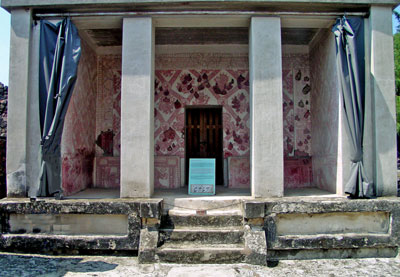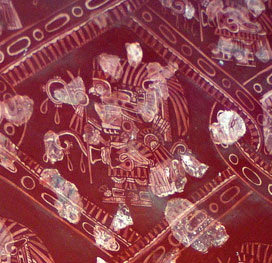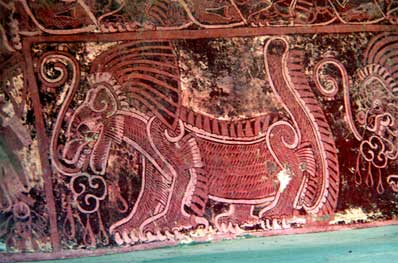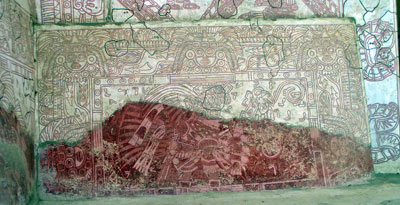Teotihuacan Residences |
Almost nothing is known about the dwellings of the sizable population who built the pyramids and other huge structures along the Street of the Dead. Those constructed later, however, reveal distinct social stratification, ranging from the very modest to the truly palatial. But, whether rich or poor, people wanted their privacy—the residential city is composed of countless walled compounds with limited entrances that may well have been guarded. "Security" is a concept that is not unique to the early twenty-first century! Some of the residential compounds were quite large, ranging up to about 75,000 square feet and providing space for a number of families or other communal groups. |

|
The pictures on this page are of Atetelco, one of the palaces that surely was inhabited by high-ranking officials. Its name means "On the stone wall next to the water," which probably referred to the stream, which still flows, near its west entrance.
|
| These murals, which themselves have been partially reconstructed, are housed in reconstructed buildings that approximate the original structures. The room, called the "White Patio," now open, was roofed in its pristine state. The mural of two coyotes, below, is an enlargement of the panel to the left of the wooden door in the photo above. |
 |
 |
Left, a sample of the pattern on the wall behind the coyotes above. And, right, a coyote on another wall of the same patio.
The curls coming from the animals' mouths are known as "speech scrolls." Just below the mouth of the figure on the right is a human heart dripping blood.
|
 |
The depictions on these murals are of warfare and sacrifice, vivid and graphic. It is good to remember that what we see here is "decoration" on walls of a residence compound. People lived here and looked at these images constantly. The walls of residences—at least the walls of elite residences—reflected the reality of the society as it was depicted in the pyramids and public buildings. |
 |
In an open courtyard in the center of Atetelco stands this (reconstructed) altar. What ceremonies were held here? |
